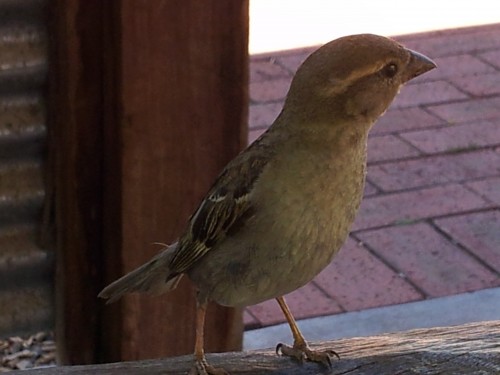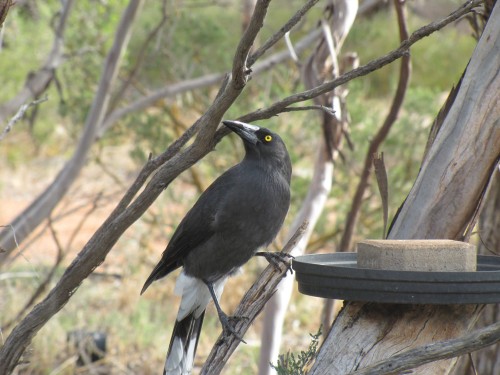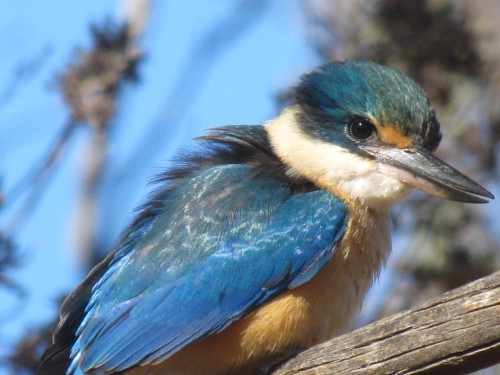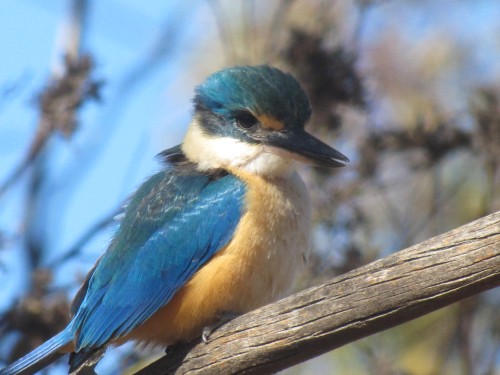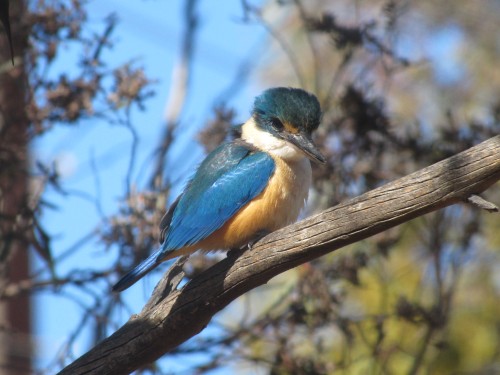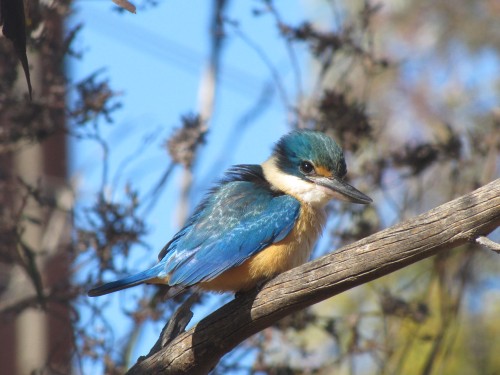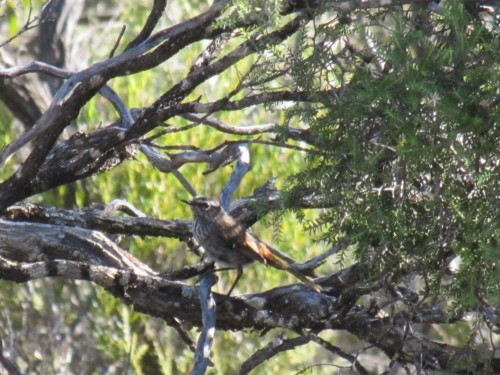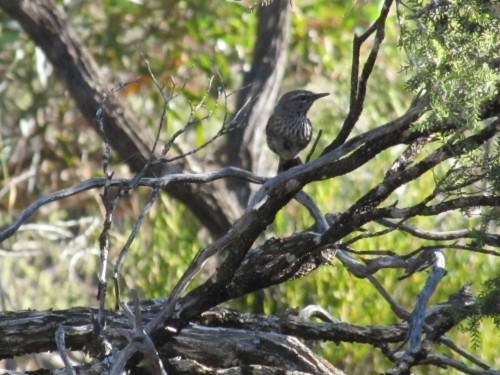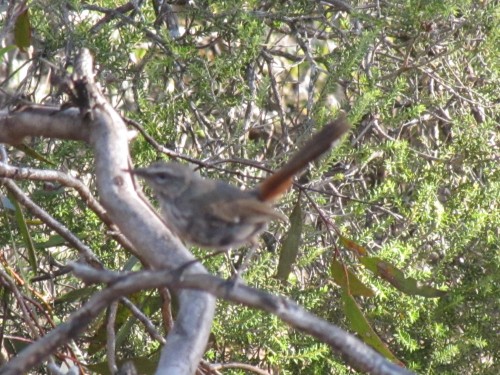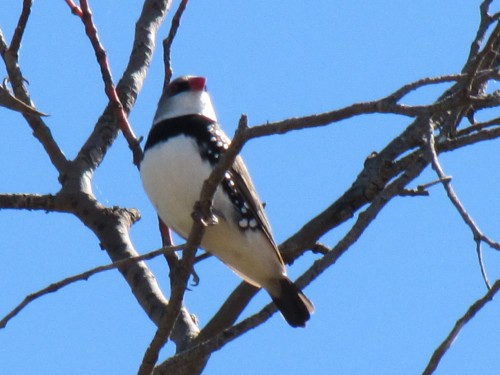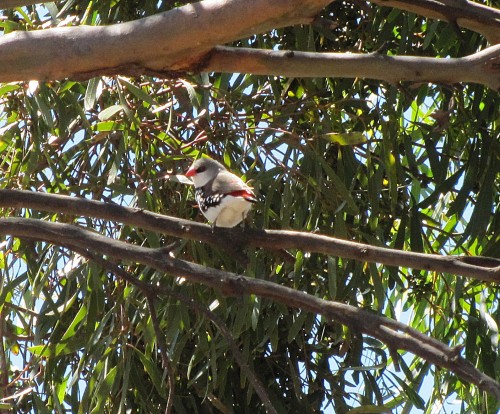On the road again
We are on the road again. To be more precise: we have been on the road and are now in Sydney for about a month staying with family for Christmas. We left just over a week ago and travelled from home in Murray Bridge, South Australia, to my son’s home in Artarmon in two days of many hours in the car. Although the distance is just over 1300km we enjoy the journey, taking note of the changing environments as we go.
All the way we are on the lookout for birds. At certain points along the way we stop for meal breaks, or to refuel. On these occasions I usually jot down the birds observed during our break. Additional lists are sometimes made as we drive along, usually when my wife is driving. If either of us sees something special or out of the ordinary I will make a note of that too.
During the morning of the first day we saw many of the usual species seen along the road from Murray Bridge to Ouyen in Victoria. This is predominantly mallee eucalypt country used for wheat and sheep farming. Along the way we saw several family groups of White-winged Choughs. It always amuses me that they do not merely walk or hop along the ground; it’s more of a swagger. If pressed hard they will fly off, their white wing patches showing up clearly. This easily identifies them from the many Australian Magpies and Little Ravens along this stretch of highway.
Also along this stretch I am also on the lookout for the way the magpies change from the white-backed sub-species to the black-backed. Intermediate hybrids are also worth looking for. As for the ravens it is a harder task. The further east one travels the more Australian Ravens can be found. The only sure way of telling them apart from the Little Ravens is to hear them call, not a practical solution driving at 110kph.
Along this first leg of the journey we also saw a few Grey Currawongs as they glided across the road in front of us, many Willie Wagtails fluttering around in search of breakfast, the occasional Nankeen Kestrel soaring or hovering over the fields, and flocks of Galahs glowing pink in the morning sun. A highlight was several brief sightings of Dusky Woodswallows, always a nice species to see.
Morning tea at Lameroo added Welcome Swallows, Australian Wood Duck, Crested Pigeon and Magpie Lark to the list. I didn’t add the feral domestic ducks which live around the artificial lake.
Coming into Ouyen for lunch I saw the only Brown Falcon sighted on the journey to Sydney. Typically, it was perched on the pole of a telephone line. While having lunch a female House Sparrow cheekily perched on the picnic table about 30cm from my lunch. It was close enough to get a few good shots with my phone (see below).
Other species added to my growing list while we ate lunch included Spiny-cheeked Honeyeater, European Blackbird, Common Starling, Yellow-throated Miner, Singing Honeyeater and White-plumed Honeyeater.
Tomorrow: from Ouyen, Victoria to Narrandera, NSW.
A sudden awakening
A few mornings ago I was just emerging from a good night’s sleep when there was a very loud bang on our bedroom window. Light was just beginning to filter into the room past the edges of our curtains. After this sudden noise there was no hope of dreaming on – or of sleeping in for a while.
In my bare feet I padded across to the window and drew the curtains, expecting to see a half-dazed bird on the pavers of the path outside.
Nothing. After showering and dressing I went into the garden to investigate. Still nothing. But the bird which had crashed into our window had left two nasty after-effects.
Streaked across the glass was a huge mess where the bird had defecated on impact.
And the glass pane was neatly cracked – diagonally from one top corner to the opposite bottom corner.
We frequently have birds crash into our windows; it probably happens every few weeks. Usually they are just stunned for a few minutes before they fly off, wiser perhaps for the experience. Several times a year – perhaps only once or twice – a bird will be so badly hurt that it is killed on impact. Usually it is the smaller birds such as the pardalotes.
Collisions like this happen all over the world. The birds see a reflection of some trees or a park or a garden in the window and they assume that they can fly right on through – until they come to a sudden halt when they hit the glass. There is very little one can do to prevent this unfortunately.
On this occasion, however, there remained a puzzle. Which species had caused such a devastating impact on our window – enough to crack it so thoroughly? My first thought was a baby magpie just learning to fly. We have several of them around at present. Then I thought it could have been a Little Raven. Tough critters – but we haven’t seen many of those around recently.
This morning I realised that it could have been a Grey Currawong. Several have been hanging around the garden recently and with their enormous beak the impact could have been caused by one of them.
Unless they start talking to me, I guess I’ll never know!
A beautiful guest at breakfast
We had a very pleasant encounter while having breakfast this morning. I was focussed on completing the daily crossword in the newspaper when my wife excitedly drew my attention to the Sacred Kingfisher just outside the window of the sun room where we often eat our meals.
My bird records are not completely up to date, but we are certain it has been several years since we had seen one in our garden, making the sighting just that little bit extra special. I had preciously taken a few photos of this species but rarely at such close quarters. This was about 5 metres away and he couldn’t see us through the glass due to the early morning reflections.
I raced to the office to get my camera – yes – even at my age I can still raise a trot, albeit a modest one. For the next 15 minutes the kingfisher posed in a number of ways for my camera. The results speak for themselves.
In between taking photos we were able to observe some of its unique behaviours. As it sat almost motionless on a dead branch – typical perching behaviour – it would gently bob its tail. It would then turn its head slightly, usually peering intently at the ground. During the 15 minutes it stayed the bird dived like an arrow to the ground to catch its prey. We couldn’t see clearly what it was eating but this species eats beetles, grubs, cockroaches, small lizards like geckos and an assortment of small insects.
This species usually gives away its presence in the bush by its far-reaching ki-ki-ki-ki call. On this occasion it was silent throughout the 15 minutes.
The Sacred Kingfisher is found over much of Australia. They are migratory, moving south to breed in the summer months. Other kingfisher species in the region where I live in South Australia include the very similar Red-backed Kingfisher and the well-known Laughing Kookaburra.
This is just a sample of the best photos I took – out of 36 all together.
I was so inspired by this event that I went and wrote a poem about the encounter. You can read the poem here.
A Shy Heathwren comes out of hiding
One of the more interesting birding spots near my home in Murray Bridge South Australia is Lowan Conservation Park near Bowhill, about a 40 minute drive to the north east. This park is mainly mallee eucalypt scrub with some native pine (Callitris) and smaller shrubby undergrowth, including acacias, eremophilas, spinifex and some annual flowering plants.
The birdlife in this park can vary from overwhelming in number to very few. It all depends upon what is flowering at the time. When many of the mallee trees are in flower the honeyeaters flock there in large numbers. When nothing is flowering I’ve struggled to list more than a dozen species – and sometimes no honeyeaters, with the possible exception of a solitary Red Wattlebird. It can be very rewarding – or downright frustrating.
On a visit early last year I was delighted to catch a glimpse of a Shy Heathwren, not a species which is common in this region. True to its name it proved to be elusive but very vocal. A birding friend had a bird field guide application on his phone, so he played the call of this species. Within seconds it was almost hopping around our feet. I was therefore able to get a few not-so-brilliant shots. Wish it had sat still for more than a half second!
As a result of this experience I just had to go and buy myself a smart phone – along with a bird guide app.
UPDATE: I have since bought a smart phone AND have a field guide app on it. I haven’t used it much for calls out bush, but my grandchildren think it is really cool. [sigh]
A more recent article about this park can be found here.
Updated July 2015.
Diamond Firetail finch, Brown’s Road, Monarto
Diamond Firetails are one of Australia’s more beautiful finches and I am pleased that I can see them within a short distance of my home in Murray Bridge, South Australia. In fact, we have occasionally seen this species in our garden, and on one occasion one even came to one of our bird baths.
Diamond Firetails are widespread in this region without being very common anywhere. In my experience they are usually encountered singly or in a small flock of only a few. The bird in several of the photos today was one of about four we saw at Brown’s Road, Monarto near Murray Bridge several years ago. The photos aren’t brilliant because these birds were rather wary and didn’t allow me to approach too close, even with the 20x zoom on my camera.
